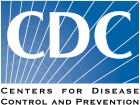

Stephen L. Cochi, M.D., M.P.H., Senior Advisor to the Director of the Centers for Disease Control and Prevention’s (CDC) Global Immunization Division (GID)
There was a time not so long ago that the thought of measles struck genuine fear in people’s hearts.
It’s easy to understand why. Measles is so contagious that any child exposed to it who’s not already immune is likely to get the disease. Worse still is that measles is hard to avoid, even for the most diligent and cautious parent since it spreads through the air by breathing, coughing or sneezing.
And yet, today in many settings the general reaction to measles is a worry-free, nonchalant shrug.
That’s the power – and legacy – of a vaccine introduced 50 years ago today that protected people and especially children from measles and in the process lifted the weight of worry from parents around the world.
Vaccines are rarely splashy or noticed by most people. But the discovery of the measles vaccine being celebrated today is a shining, monumental achievement in the history of public health.
Before the measles vaccine became available in 1963, between 3 million and 4 million people out of a population of 189 million – mostly children – were stricken each year in the United States. On average, 450 people would die and those numbers would spike with sad predictability every two or three years when larger outbreaks would take hold. Many more got sick; sometimes terribly sick since more than half the population would contract measles by the time they were 6 years old. At least 90 percent would have gotten measles by the time they reached age 15.

Before there was a vaccine against measles, the only way to prevent the spread of the disease was through strict quarantine and isolation measures. This warning sign was posted in the state of Connecticut and violators would have been punished.
That explains the deep and genuine fear prior to 1963. It also explains the dramatic change since then and how that change is reflected in the numbers.
With mass production of the measles vaccine and widespread inoculations, the annual number of measles cases in the United States plummeted by the end of the 1960s from several million to several thousand. Thanks to the measles vaccine, the entire Western Hemisphere has eliminated the disease. Now the only measles cases occurring in the Americas are those that arrive with travelers.
Today, 50 years after the vaccine was licensed in the United States, it is used in every country of the world. An estimated 110 million babies receive their first dose by the time they turn one. Tens of millions more doses are delivered as a booster when a child is older, as well as during campaigns such as those supported by the Measles & Rubella Initiative, one of CDC’s partnerships.
The vaccine costs about 23 cents a dose. Combined with rubella vaccine, it’s about US$1.00 to deliver to children in poorer countries.
From a global perspective, measles vaccine has been one of the greatest public health achievements of the 20th century. Measles has gone from being one of the top 5 leading causes of death among children worldwide to a much less common cause of death today. Still, more than 100,000 children are dying each year despite the availability of a highly effective, inexpensive vaccine.
With support from the Measles & Rubella Initiative and commitment from governments around the world, global measles deaths worldwide fell 78 percent between 2000 and 2012. The use of measles vaccines in countries around the globe is projected to save 13.4 million more kids’ lives by the year 2020.

A young woman in Laos steels herself to receive the combined measles-rubella vaccine to protect herself and her future children from measles and congenital rubella syndrome. Photo courtesy of Christine McNab/Measles & Rubella Initiative.
All Member States in the six World Health Organization (WHO) regions committed to eliminating measles by – or before – 2020. The Southeast Asia Region made its commitment in September. The announcement was timed to coincide with the approaching 50th anniversary of the measles vaccine.
We will be honoring Dr. Samuel Katz, one of the inventors of the first measles vaccine, alongside other Measles and Rubella Initiative partners at CDC with a press conference on 5 December 2013 to mark the occasion of the golden anniversary of the first measles vaccine.
As we mark the 50th anniversary of measles vaccine and celebrate its dramatic impact on this devastating disease, there is still more that we can do to make it possible for every child to receive the protective benefits of this lifesaving vaccine. If we can reach this achievable goal in the near future, then we can stop measles for good. No child, regardless of where she or he lives, will have to fear the measles once we ‘stop the spots’ forever.

